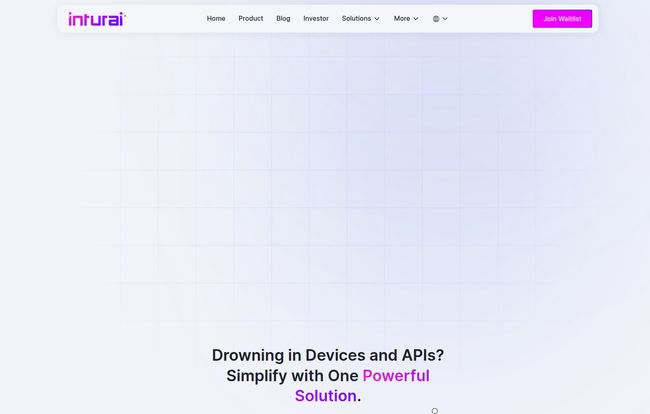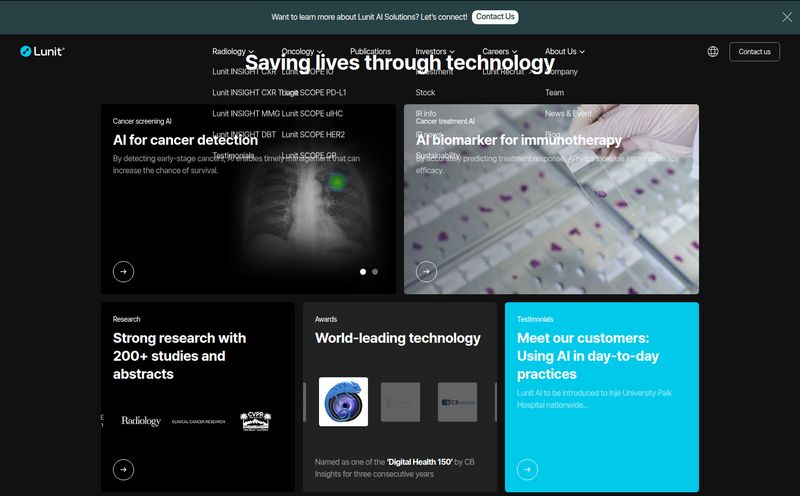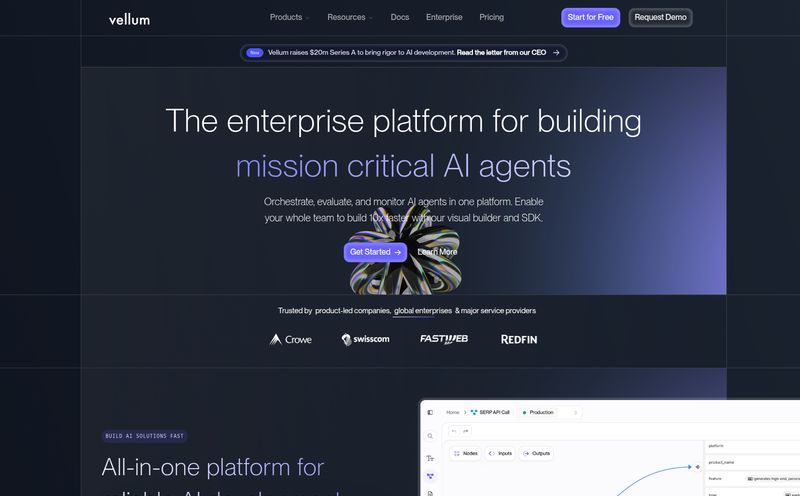I’ve been in the tech and SEO game for a long time. I’ve seen trends come and go, from the QR code craze (the first time) to the metaverse hype. And if there's one thing I've learned, it's to be skeptical of anything that promises to be the 'next big thing'. Especially in the smart home and health tech space. We're constantly sold this vision of a seamlessly connected future, but often it comes with a creepy, unspoken trade-off: our privacy.
We install smart cameras to keep an eye on our aging parents, but the thought of a lens watching their most private moments feels... icky. We buy wearables to track health, but getting Grandma to remember to charge another device is a battle in itself. It's a constant tug-of-war between care and surveillance.
So, when I stumbled upon a platform called Inturai, my professional curiosity was piqued. Their claim is bold: they can monitor movement, health, and activity using nothing but the existing Wi-Fi signals in a building. No cameras. No wearables. No microphones. Just... Wi-Fi. My first thought? 'Yeah, right.' My second thought? 'Okay, but what if they're onto something?'
So, What Exactly is Inturai? (And Why Should You Care?)
Let's break it down. Inturai is an AI-powered platform that doesn't need to see or hear to know what's happening in a room. Instead, it uses the Wi-Fi signals from a standard router to detect presence, movement, and even specific events like a fall. Think of it like a bat's echolocation. The router is constantly sending out signals that bounce around the environment. When a person moves through that space, they create tiny disturbances in those signal patterns.
We can't perceive these changes, but Inturai's AI can. It analyzes these minute fluctuations in what the tech world calls Channel State Information (CSI) to build a picture of the activity in a space. Its a pretty wild concept, turning your entire Wi-Fi network into a single, invisible motion sensor. This isn't just for checking if someone is home; we're talking about sophisticated insights for healthcare, smart homes, and security applications.
How Does This Wi-Fi Magic Actually Work?
Alright, let's get slightly more technical, but I promise not to give you a headache. Every Wi-Fi signal travels from the router to your device (like your phone or laptop) along multiple paths. It bounces off walls, furniture, and... people. The state of these signals—their strength, phase, and timing when they arrive—is the 'Channel State Information' or CSI.
When you're sitting still, the CSI is relatively stable. But when you stand up, walk across the room, or—critically—fall, you drastically alter those signal paths. Inturai's machine learning models are trained on mountains of this data to recognize the specific 'signal signature' of different actions. It learns to tell the difference between a person walking, a pet scurrying by, or the sudden, sharp change that indicates a potential fall. The result is real-time awareness without a single camera lens. Honestly, its kind of brilliant.

Visit Inturai
The Features That Genuinely Got My Attention
A cool concept is one thing, but execution is everything. After digging into what Inturai offers, a few things really stood out to me as a tech professional and, well, as a human being.
The Huge Privacy Win
This is the big one, isn't it? The single most compelling aspect of this technology is that it's inherently private. There are no video feeds to be hacked, no recordings of private conversations, no awkward feeling of being watched. For applications like remote patient monitoring or elder care, this is a game-changer. You can ensure safety in the most sensitive areas of a home, like a bedroom or bathroom—where a significant number of falls occur—without a shred of visual intrusion. That's not just a feature; it's a fundamental shift in how we can approach in-home care technology.
Using What You Already Have
My second favorite part? It’s designed to be cost-effective by leveraging existing infrastructure. Think about the cost and hassle of outfitting a home or a care facility with a network of smart cameras, motion sensors, and pressure pads. It adds up fast. Inturai’s approach uses the Wi-Fi router that’s likely already there. This drastically lowers the barrier to entry for deploying advanced monitoring, making it more accessible for families and more scalable for businesses. For developers, the platform boasts easy integration, sometimes with just a single line of code, which is just fantastic.
The Simplicity of It All
Technology this complex should be a nightmare to manage, right? Apparently not. One of the killer features is a no-code event and alert trigger system. This means someone without a degree in computer science—say, a manager at an assisted living facility or a concerned family member—could potentially set up custom alerts. For example: “Send a notification to my phone if Dad hasn't gotten out of bed by 10 AM,” or “Trigger an alert if there’s no movement in the kitchen for more than 4 hours during the day.” It puts the power of the AI into the hands of the people who actually need it, without a steep learning curve.
My Honest Take: The Good and The... Well, The Considerations
Okay, let's get real. No technology is perfect, and as an SEO and tech analyst, I'm paid to be healthily skeptical. While I'm genuinely excited about Inturai's potential, we have to look at both sides of the coin.
The upside is clear and powerful. You get enhanced privacy, lower costs by using existing hardware, and the potential for incredible real-time insights that can improve operational efficiency and, more importantly, provide peace of mind. For a care home, this could mean better staff allocation based on real activity data rather than arbitrary checks. For a family, it means knowing a loved one is safe without making their home feel like a television studio.
But there are potential hiccups. The entire system hinges on the quality and coverage of the Wi-Fi signal. In a large home with thick walls or known Wi-Fi dead zones, performance could be compromised. I imagine a multi-router mesh network would be ideal, but it’s a dependency to be aware of. Also, the AI isn't psychic. The documentation mentions that it may require some initial training for specific events. This makes sense—it needs to learn the 'normal' of an environment to spot the 'abnormal'. It needs to be calibrated to know the difference between a person falling and a large golden retriever jumping off the sofa. This isn't a flaw, just a practical reality of machine learning that users should expect.
What's the Damage? A Look at Inturai's Pricing
This is the part of the review where I usually break down the subscription tiers, but with Inturai, it’s a bit different. They don't have a public pricing page, and that’s not a red flag. In fact, it's very common for B2B or enterprise-grade platforms like this.
Pricing is likely customized based on the scale of the deployment. A developer building a single smart home app will have very different needs—and a different budget—than a national healthcare provider looking to integrate Inturai's tech into hundreds of facilities. The best course of action is to reach out to their sales team directly through their website to get a quote tailored to your specific project.
Who Is This For, Really?
After all this analysis, I see a few key groups who should be paying very close attention to Inturai:
- Healthcare and Assisted Living Providers: For non-invasive, continuous remote patient monitoring, this technology is a potential revolution. It respects dignity while providing an unprecedented layer of safety.
- Smart Home & IoT Developers: If you're building the next generation of smart home applications, Inturai offers a powerful, privacy-first tool to create truly intelligent and responsive environments.
- Families Caring for Loved Ones: For those of us in the 'sandwich generation' or simply caring for an independent-living relative, a product built on Inturai's tech could be the perfect solution for ensuring safety without intrusion.
A Glimpse into a Smarter, Kinder Future
Look, the march of technology is relentless. But it's not often we see a step forward that feels genuinely... thoughtful. Inturai's use of Wi-Fi for movement and health monitoring isn't just clever tech; it's a solution to a deeply human problem. It balances our need to care with the fundamental right to privacy.
It's not a silver bullet—the reliance on good Wi-Fi is a real consideration—but it's a massive, exciting leap in the right direction. It’s technology that aims to be helpful, not creepy. And that’s a future I’m definitely here for.
Frequently Asked Questions
1. Does Inturai completely replace the need for emergency alert buttons or calling 911?
No. Inturai should be seen as a proactive monitoring and alerting tool. It can notify caregivers or monitoring services of a potential issue like a fall, but it is not a replacement for emergency services or devices like a PERS (Personal Emergency Response System) button. It's an added layer of intelligence.
2. I have a dog and a cat. Will they constantly trigger false alarms?
This is a key challenge for any motion-sensing system. Inturai's advantage is its AI. With proper training and data, the machine learning models can be taught to differentiate between the 'signal signature' of a human and that of a pet, significantly reducing false positives.
3. Do I need to buy a special, expensive Wi-Fi router to use technology like this?
Generally, no. The technology is designed to work with most modern, existing Wi-Fi routers and infrastructure. The most important factor isn't the brand of the router, but the strength and stability of its signal throughout the monitored area.
4. How secure is my data with Inturai? Is it watching what I browse online?
This is a critical point. Inturai is not analyzing your internet traffic content (what websites you visit). It analyzes the physical properties of the radio waves themselves—the CSI data. It's monitoring the physics of the signal, not the data packets. The company emphasizes privacy and security in its design.
5. How complicated is it to set this up in a home?
For an end-user, the setup process would depend on the specific product or service that has integrated Inturai's technology. The goal is for these partner companies to create a simple, user-friendly setup experience. For developers looking to integrate the tech, Inturai states it can be as simple as adding a single line of code.



